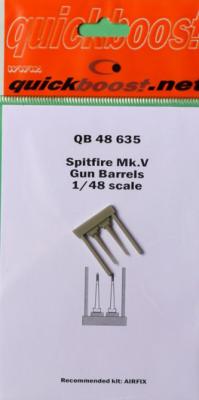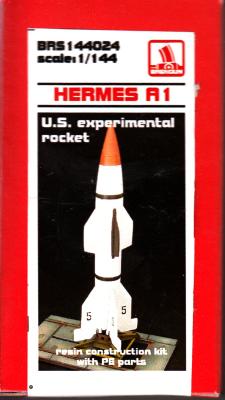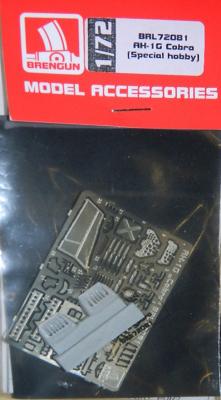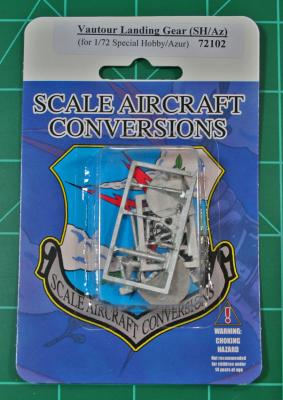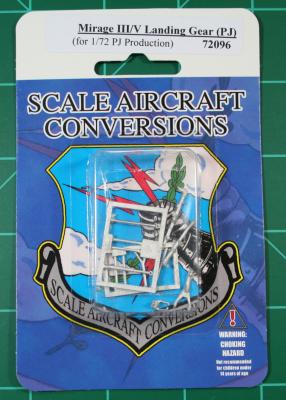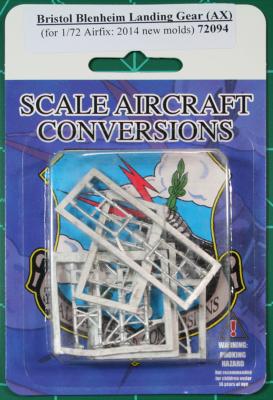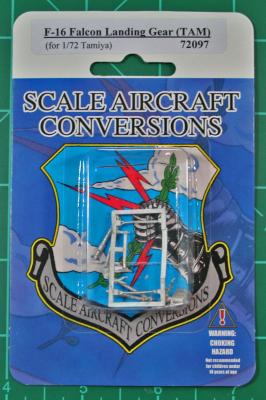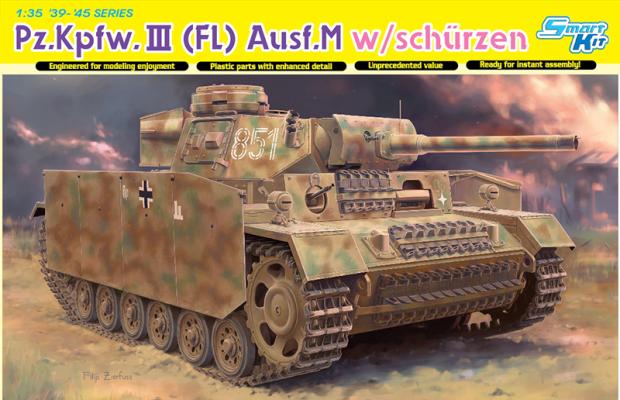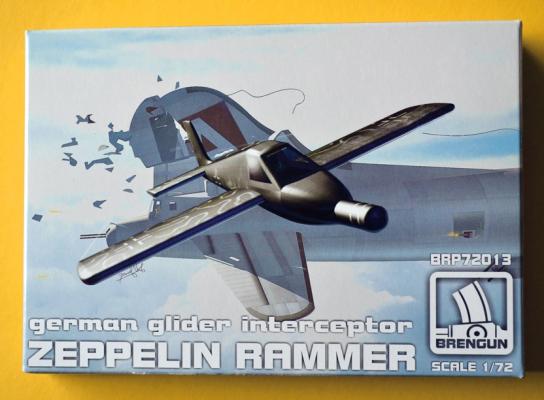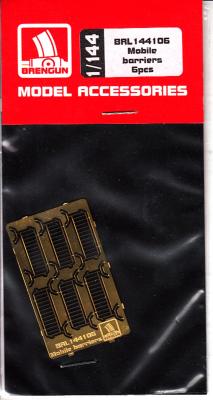Quickboost has added a pair of detailed Spitfire Mk.V cannon barrels to their aftermarket parts line that can be used to replace the ones that come in the new Airfix 1:48 scale kit. The barrels have a slightly more delicate profile than the ones in the kit and no seam lines to clean up. They also have open ends so there’s no need to break out the pin vice and # 76 drill bit. The base of the Quickboost barrels are molded to match the shape of the Airfix barrels so they will fit into the leading edge recesses as drop-in replacements. (see the comparison photo below of the Quickboost parts and the kit parts). The detail closely mirrors the kit parts, but the Quickboost barrels capture the look of the prototype with crisp and more refined recoil springs that appear less pronounced. With some adjustment, these barrels also may be used on kits other than Airfix.
What's New
The Hermes Program was a post WW-II American program which utilized German missile designs. Best known of this series was the Hermes A2, which was the A-4 (V-2) copy. The Hermes A1 was based on the Wasserfall, a surface to air missile developed at Peenemunde in 1942, but which never reached production. General Electric developed an built the Hermes A1, which was about ¼ the size of the Hermes A2.
The other big difference between the A1 and A2 was that the A1 had 4 extra fins on the sides of the rocket body. This was to allow greater maneuverability when the rocket was being guided to a target aircraft. The guidance was done visually during daylight and with radar assist at night. Steering from the ground was done with a joystick.
Five A1s were successfully tested at White Sands Range in New Mexico in 1950 and 51. The entire Hermes program was canceled in 1954.
Thanks to Brengun for providing this most excellent upgrade set for the Special Hobby AH-1G cobra; and to IPMS USA for sending it to me to review!
If you are interested in the “Snake”, the Special Hobby 1/72 kit is well worth acquiring. Y etc…turbine exhaust is a first in ANY scale, and two types of tail rotor mounts, one port side, one Starboard side based on the version you are building. And you get a set of not only 2.75” rocket pods, but minigun pods as well if you don’t use them. I purchased the M-35 kit, which has the externally mounted .20MM Vulcan short-barreled cannon, and the associated saddle magazine set for it. I hope they pantograph this one up to 1/48 or even 1/35, as it’s that good… and it’s appropriate for the Vietnam-era builders out there like me. The old 1/32 Revell kit is a bit long in the tooth…
Scale Aircraft Conversions, or SAC, make replacement landing gear for a wide variety of aircraft, in all the major scales. They are cast in white metal, which is stronger than the kit’s plastic pieces. To quote the company’s website, “Some sets consist of the main gear only while others include the nose gear, tail gear and/or adjacent related components. Some inaccuracies in the original kit gear have been corrected but the mounting points remain identical to the factory parts.”
Scale Aircraft Conversions, or SAC, make replacement landing gear for a wide variety of aircraft, in all the major scales. They are cast in white metal, which is stronger than the kit’s plastic pieces. To quote the company’s website, “Some sets consist of the main gear only while others include the nose gear, tail gear and/or adjacent related components. Some inaccuracies in the original kit gear have been corrected but the mounting points remain identical to the factory parts.”
Scale Aircraft Conversions (or “SAC”) make replacement landing gear for a wide variety of aircraft in all the major scales. They are cast in white metal, which is stronger than the kit’s plastic pieces. To quote the company’s website, “Some sets consist of the main gear only, while others include the nose gear, tail gear and/or adjacent related components. Some inaccuracies in the original kit gear have been corrected but the mounting points remain identical to the factory parts.”
This set is made to replace the parts for Airfix’s new-mold Bristol Blenheim, either the Mk.I or Mk.IV. As you can see from the pictures, they’re direct replacements for the kit parts. The level of detail is very similar, though I think I like SAC’s tail wheel a bit better.
Of course, being made of the kind of metal they are, some parts may bend a bit during shipping. They straighten easily and are quite sturdy when assembled. Recommended.
Scale Aircraft Conversions, or SAC, make replacement landing gear for a wide variety of aircraft, in all the major scales. They are cast in white metal, which is stronger than the kit’s plastic pieces. To quote the company’s website, “Some sets consist of the main gear only while others include the nose gear, tail gear and/or adjacent related components. Some inaccuracies in the original kit gear have been corrected but the mounting points remain identical to the factory parts.”
This set is made to replace the parts for Tamiya’s F-16CJ. They seem to be direct replacements for the kit parts, providing more strength and should withstand more handling during construction than the kit parts might. They’ll definitely help add to the beefy look of the later F-16 landing gear.
These are well-made parts that should be drop-in replacements. Thanks to SAC for providing the set for review and to IPMS/USA for allowing me to review it.
Dragon Models offers a complete lineup of the Pz.Kpfw. III family tree in 1/35 scale, including several new kits in this last year alone. The subject of this review is the Pz.Kpfw.III (F) Ausf. M (w/Schürtzen), from their “’39 to ‘45” Smart Kit series. The [F] stands for FlammenPanzer, or ‘flame tank’.
A flame tank is a type of tank equipped with a flamethrower, most commonly used to supplement combined arms attacks against fortifications, confined spaces, or other obstacles. The type only reached significant use in the Second World War, during which the United States, Soviet Union, Germany, Italy, Japan and the United Kingdom (including members of the British Commonwealth) all produced flamethrower-equipped tanks.
Brengun offers model builders a way to spend a few enjoyable hours assembling a pair of miniature examples of a German WWII secret weapons that never was…well, not beyond a single prototype to be accurate. Kit BRL 72013 provides two small sprues of 16 grey plastic parts, a pair of clear canopies, a very small photo-etched fret of 20 parts and a little wisp of a decal sheet that provide enough components to build a pair of Zeppelin Rammers…one more than the Germans actually had.
The Rammer (German: Rammjäger) was one of the projects for a German 'secret weapon' by Luftschiffbau Zeppelin. It was designed primarily for aerial ramming against the allied bomber fleets that by 1944 were effectively leveling cities throughout Nazi Germany…and, maybe bringing the pilot back to earth breathing.
OK, here’s a diorama accessory for aircraft or armor, or any other idea you can come up in 1/144 scale. How about N Gauge railroading?
The product is a set of 6 metal barriers with legs and connectors, so you could make a hexagonal pen, or put 6 of them against a wall with a 2X2 setup and the wall is the 4th side.
There was a time when I wished we had those barriers for the static display aircraft at my Guard unit’s air show. In spite of the “NO SMOKING” signs prominently displayed around the aircraft, there was one guy who lit one up. Right under the wing of an F-14. Next to the fuel tank. Well, it was a shady spot. I called him on the “no smoking” rule, and he was going to put his cigarette out in the nicely provided butt can. Except this can was actually for overflowed fuel from the wing tank, and if I hadn’t physically restrained him, he would have burned himself and the aircraft. And possibly me too.

